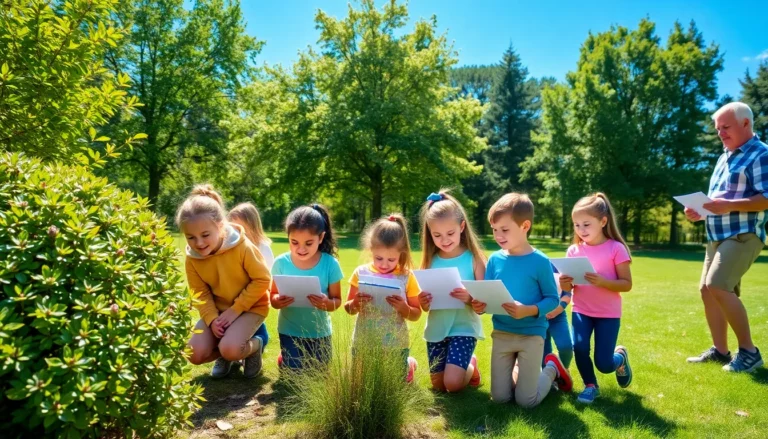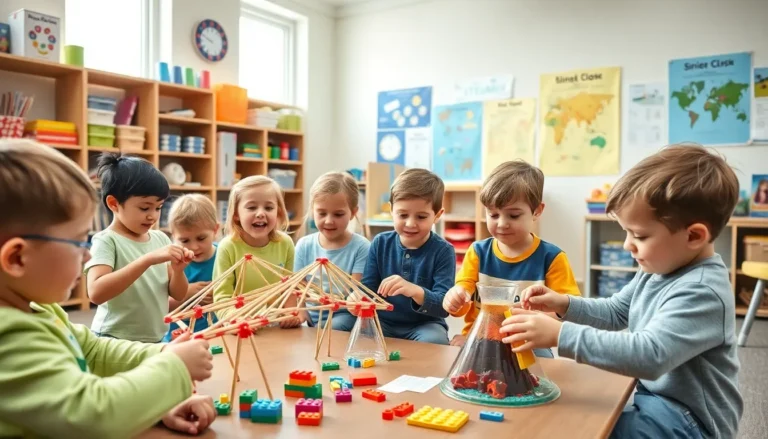Table of Contents
ToggleFostering and adoption aren’t just about finding a home for children; they’re about creating families filled with love, laughter, and maybe a little chaos. Imagine opening your heart and home to a child who needs it most. It’s like adopting a puppy but with more paperwork and fewer chew toys. And let’s be honest, who wouldn’t want to add some extra joy (and occasional mischief) to their life?
Understanding Fostering And Adoption
Fostering and adoption serve as critical avenues for providing care to children in need. Both options create loving family environments, but they operate under different principles.
Definition And Key Differences
Fostering provides temporary care for children who cannot stay with their birth families. Foster parents offer support, stability, and love until a reunification or alternative arrangement occurs. Adoption, on the other hand, establishes permanent legal relationships between children and their adoptive families. Adoptive parents assume full parental rights and responsibilities. Both paths play unique roles in child welfare, but fostering focuses on temporary solutions, whereas adoption ensures lifelong family connections.
Common Myths And Misconceptions
Many believe foster care is only for troubled children. In reality, children enter the system for various reasons, including neglect or family crises. Another misconception suggests that fostering is a simple process. Individuals often encounter rigorous requirements such as background checks and training sessions. Some think adopting children is prohibitively expensive. While adoption involves legal fees, many resources and financial assistance options exist. Addressing these myths fosters a better understanding of the realities surrounding fostering and adoption.
The Fostering Process
Fostering involves specific steps and embraces challenges along with significant rewards.
Steps To Become A Foster Parent
First, individuals must complete an application process to express their interest. Background checks ensure safety for children in foster care. Training programs provide essential skills and knowledge for prospective foster parents. Attending informational meetings helps clarify expectations and requirements. Home studies assess the living environment, ensuring it meets necessary standards. Once approved, individuals can begin matching with children in need of care.
Challenges And Rewards
Foster parenting often presents challenges that require patience and resilience. Adjusting to a child’s trauma can be difficult, as they may struggle with trust and emotional issues. Communication with birth families might complicate the process, requiring sensitivity and cooperation. Despite these challenges, many experience profound rewards. Creating a sense of belonging for a child brings immense satisfaction. Witnessing a child’s growth and development can be incredibly uplifting. Building a loving, supportive family environment fosters connection and stability for everyone involved.
The Adoption Journey
Adopting a child involves multiple steps and a range of considerations. Each type of adoption offers distinct pathways to building a family.
Types Of Adoption
Adoption types include domestic, international, and foster-to-adopt. Domestic adoption typically occurs within the same country, while international adoption involves bringing a child from another country. Foster-to-adopt allows families to provide temporary care for children in the foster system, with the possibility of permanent adoption. Each type has unique requirements and processes, ensuring compatibility with potential adoptive parents. Understanding these options helps families choose the best fit for their situation.
Legal Considerations
Legal aspects of adoption encompass several critical factors. Adoption agencies guide families through necessary paperwork and legal requirements. Background checks, home studies, and court approvals are essential components of the process. Agencies provide information on adoption laws that may vary by state. Meeting legal standards ensures a smooth transition for the child into their new family. Between parental rights termination and finalization hearings, understanding legal steps minimizes potential delays and confusion.
The Impact On Children
Fostering and adoption significantly shape children’s lives. Both processes provide stability, love, and a sense of belonging.
Emotional And Psychological Development
Emotional support greatly influences a child’s well-being. Children in foster care or adoption often face trauma from instability, affecting their development. They benefit from stable environments fostering trust and security. Positive relationships with caregivers promote resilience. Emphasis on consistent care helps mitigate behavioral issues and emotional struggles. Furthermore, therapeutic resources can aid in processing past experiences. Research indicates children placed in loving homes show improved mental health outcomes over time.
Success Stories
Success stories illustrate the powerful impact of fostering and adoption. Many children thrive in nurturing households, transforming their futures. For instance, several young people have excelled in academics and sports after finding stability. Families share transformative experiences that highlight overcoming adversity together. An adopted child who previously faced neglect may now be pursuing higher education, thanks to dedicated parents. Various organizations also showcase inspiring narratives of foster children achieving personal milestones. These stories underscore the profound possibilities available through fostering and adoption.
Resources And Support
Numerous resources and support options exist for those engaging in fostering and adoption. These tools can significantly ease the journey for families and promote a successful experience.
Organizations And Agencies
National and local organizations play crucial roles in supporting foster and adoptive families. The Child Welfare Information Gateway offers comprehensive information on fostering and adoption processes. Furthermore, the AdoptUSKids provides resources, including listings of children in need of families and guidance through the adoption process. State departments of child services also contribute valuable local support, connecting families with necessary training and resources. Community-based agencies often help families navigate the complexities of required paperwork and legal considerations.
Community Support Networks
Community support networks enhance the experience for foster and adoptive families. Local support groups offer opportunities to share experiences and insights with others in similar situations. Many communities host events aimed at fostering connections between families, which can provide emotional support. Online forums also create spaces for families to seek advice, share success stories, and foster relationships. Ultimately, a strong network can create a sense of belonging and reduce feelings of isolation during the fostering or adoption journey.
Conclusion
Fostering and adoption represent profound commitments that can change lives. They offer children the chance to experience love and stability in nurturing environments. The journey may be filled with challenges but the rewards are immeasurable. Each child deserves a loving family and through fostering and adoption, families can provide that essential support.
With the right resources and community backing, the process becomes more manageable. Understanding the emotional and legal complexities is crucial for prospective parents. Embracing the journey of fostering and adoption not only transforms children’s lives but enriches the lives of families as well.







